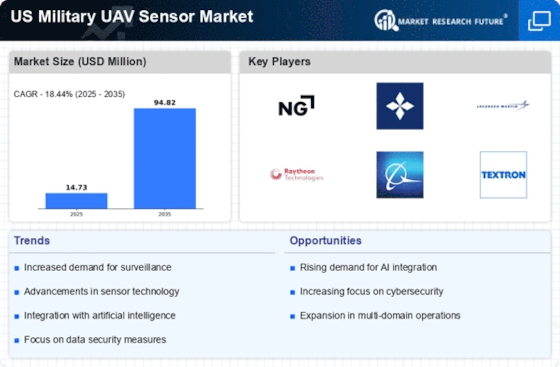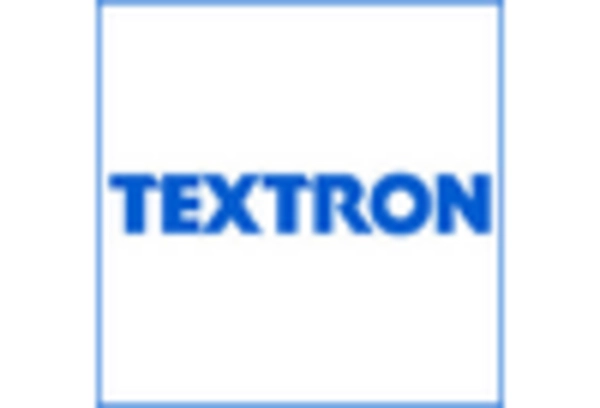Increased Military Spending
The US Military UAV Sensor Market is bolstered by a notable increase in military spending, particularly in the realm of unmanned systems. The Department of Defense has allocated substantial budgets for the development and procurement of advanced UAVs equipped with cutting-edge sensors. In fiscal year 2025, the defense budget is expected to exceed $800 billion, with a significant portion earmarked for UAV technology. This financial commitment underscores the strategic importance of UAVs in modern warfare, as they provide critical intelligence, surveillance, and reconnaissance capabilities. Consequently, the demand for sophisticated sensors that can operate in diverse environments is likely to surge, further propelling market growth.
Integration of UAVs in Joint Operations
The US Military UAV Sensor Market is significantly impacted by the integration of UAVs in joint operations among various military branches. This collaborative approach necessitates the development of sensors that can seamlessly communicate and share data across platforms. The increasing complexity of modern warfare demands that UAVs operate in conjunction with manned aircraft and ground forces, requiring advanced sensor systems capable of providing comprehensive situational awareness. As joint operations become more prevalent, the market for UAV sensors is expected to expand, driven by the need for interoperability and enhanced operational efficiency. This trend indicates a shift towards a more integrated military strategy, where UAVs play a pivotal role.
Rising Threats and Geopolitical Tensions
The US Military UAV Sensor Market is also shaped by rising threats and geopolitical tensions that necessitate enhanced surveillance capabilities. As global security dynamics evolve, the demand for UAVs equipped with advanced sensors to monitor potential threats is increasing. The ongoing conflicts and regional instability have prompted military leaders to prioritize the acquisition of UAV systems that can provide real-time intelligence and reconnaissance. This heightened focus on threat assessment is likely to drive market growth, as military organizations seek to bolster their capabilities in response to emerging challenges. The urgency to maintain a strategic advantage underscores the critical role of UAV sensors in contemporary military operations.
Technological Advancements in Sensor Technology
The US Military UAV Sensor Market is experiencing a transformative phase driven by rapid technological advancements. Innovations in sensor technology, such as enhanced imaging capabilities and improved data processing, are reshaping operational effectiveness. For instance, the integration of artificial intelligence and machine learning algorithms into UAV sensors allows for real-time data analysis, significantly improving situational awareness. The market is projected to grow at a compound annual growth rate (CAGR) of approximately 10% over the next five years, reflecting the increasing reliance on sophisticated sensor systems. These advancements not only enhance reconnaissance and surveillance missions but also facilitate precision targeting, thereby optimizing resource allocation and mission success rates.
Growing Emphasis on Data Collection and Intelligence
The US Military UAV Sensor Market is increasingly influenced by the growing emphasis on data collection and intelligence gathering. As military operations become more data-driven, the need for advanced sensors that can capture high-quality information in real-time is paramount. UAVs equipped with multi-spectral and hyperspectral sensors are being deployed to gather actionable intelligence across various terrains. This trend is reflected in the rising number of UAV missions, which have reportedly increased by over 30% in the past two years. The ability to collect and analyze vast amounts of data enhances decision-making processes, thereby improving operational outcomes and reinforcing the strategic value of UAVs in military operations.


















Leave a Comment